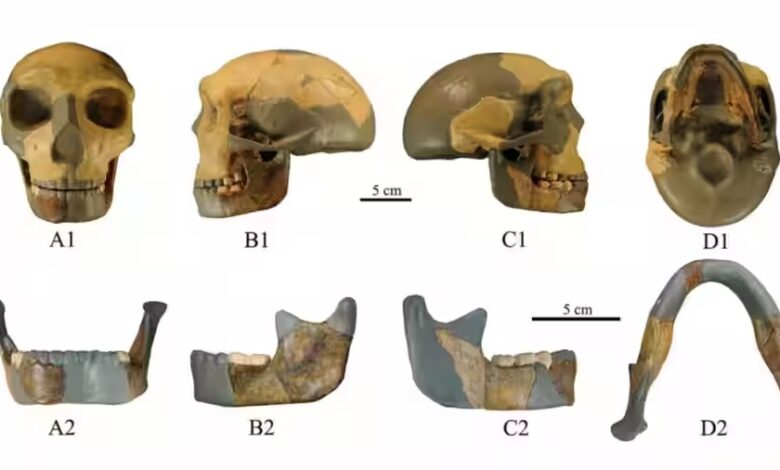Unearthing Ancestral Enigma: Ancient Skull Defies Known Human Lineages

The topic of human ancestry, often regarded as settled among the general populace, is far from being definitively understood. Unveiling a new layer of complexity to this ancient puzzle, a remarkably distinct skull has emerged, confounding scientists with its dissimilarity to contemporary human features. This enigmatic relic, originating from a child living approximately 300,000 years ago, has ignited speculation about the possibility of an entirely new branch in the human family tree.
A recent Science Alert article sheds light on the perplexing discovery, with experts from the Chinese Academy of Sciences (CAS) collaborating with researchers from China’s Xi’an Jiaotong University, the University of York in the UK, and Spain’s National Research Center on Human Evolution. The unearthed skull, believed to be from a child aged 12 to 13, was found alongside a jaw and leg bones in East China’s Hualongdong region in 2019.
The skull’s distinctive characteristics have confounded scientists attempting to categorize it within existing human lineages. It defies resemblance to well-known groups such as Neanderthals, Denisovans, or modern humans. Instead, it exhibits a blend of features that indicate the potential need for the addition of a new branch to the hominin or human family tree. Detailed research published in the Journal of Human Evolution reveals that while the skull’s face bears similarities to modern humans, its limbs, skull cap, and jaw retain more primitive traits.
Of particular intrigue is the absence of a chin, a trait reminiscent of the Denisovan lineage that once existed in Asia and has since become extinct. This amalgamation of traits complicates the identification process, suggesting a mosaic of physical characteristics and the coexistence of three distinct lineages in Asia: H. erectus, Denisovan, and the newly proposed lineage, which shares a “phylogenetically close” relationship with modern humans. Although this lineage remains unnamed, it has been temporarily designated as HLD 6, with “HLD” signifying its origin in Hualongdong.
The emergence of Homo sapiens, or “wise humans,” is estimated to have occurred in China approximately 120,000 years ago, highlighting the complexity and depth of the region’s human history. The CAS researchers believe that the skull’s discovery might unveil an unprecedented narrative—a hybrid lineage bridging the gap between the branch that gave rise to modern humans and the lineage responsible for other ancient hominins in the same region.
News Mania Desk / Agnibeena Ghosh 8th August 2023






